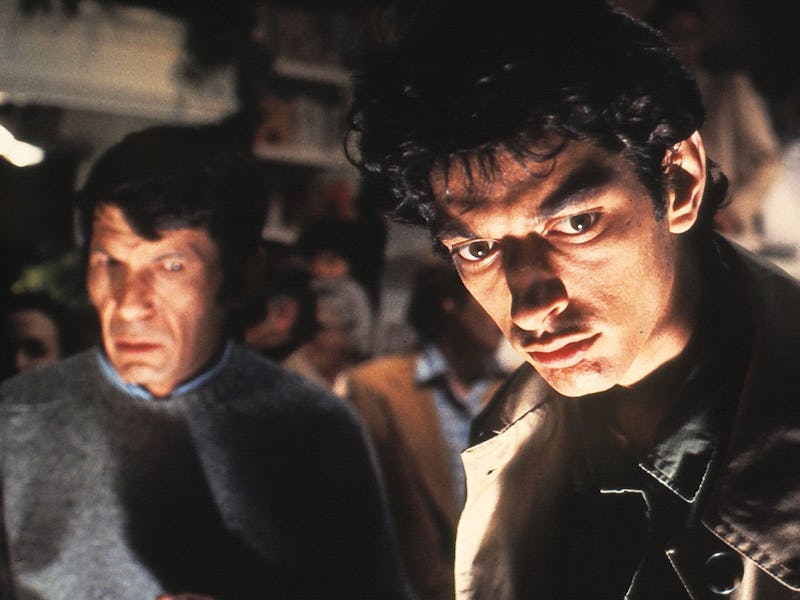Invasion of the Body Snatchers Remains the Ultimate Paranoid Thriller
Don’t sleep.

Like “Transformers sequel” or “Snyder cut,” “horror remake” are two words that rarely go well together. If a horror movie got it right the first time, a remake probably won’t have much to add, and if it wasn’t good the first time, shiny new CGI won’t redeem it. In the decades since Gus Van Sant’s shot-by-shot Psycho replica, a glut of disappointing remakes — from 2011’s misguided Don’t Be Afraid of the Dark to 2015’s tedious Poltergeist — have reminded us that what’s really scary is something we haven’t seen before.
But 45 years ago, Hollywood gave us that rarest of birds: a horror remake that’s not only great, but actually surpasses the original. 1978’s Invasion of the Body Snatchers is a potent mix of paranoid thriller and supernatural horror that remains chilling nearly half a century later.
The film builds upon the 1956 flick of the same name (itself adapted from a 1954 Jack Finney novel), a creepy and understated thriller with shades of noir about a doctor (Kevin McCarthy) who discovers that the inhabitants of his northern California town are being replaced with emotionless alien duplicates hatched from giant seed pods.
The original channeled B-movie ingredients into a sci-fi classic, its on-the-run scenes deservedly iconic and its themes of infiltration by malevolent forces widely interpreted in the context of Cold War anxieties. Yet the film is slightly weighted by first-act explication and hampered by a clumsy, FBI-saves-the-day coda mandated by studio execs (“The studio felt that the film was too downbeat,” recalled McCarthy in a DVD extra).
Such compromises did not plague the Invasion of the Body Snatchers that emerged during the New Hollywood era, when creative power shifted away from studios and towards “auteur” directors. With Philip Kaufman at the helm, the film did what a remake is supposed to, upgrading a great story for a new generation and a headier filmmaking style.
This version is set in San Francisco, a post-hippie urban milieu of mud spas and celebrity psychiatrists, and stars Brooke Adams and the gloriously curly-haired Donald Sutherland as Elizabeth and Matthew, Health Department employees on the run from the body-snatching “pod people” they gradually realize are replacing everyone around them.
And being gross about it, too.
The A-list cast also includes Leonard Nimoy and a strapping young Jeff Goldblum, all of whom are required to give dual performances portraying their characters before and after they’ve been replaced. The time we spend getting to know these characters early — during the party scene, for instance, where Nimoy and Goldblum bicker — draws out their emotions and sets up a contrast with the soulless duplicates who later replace them.
After Elizabeth realizes her boyfriend, Geoffrey, is an imposter and that a pod has been planted to take her place, the paranoia escalates fast. Anyone could be a phony, and Matthew’s attempts to alert the authorities reveal that they’re part of the conspiracy, too. There’s no one to run to.
In this sense, Invasion of the Body Snatchers reflects the anxiety-stoking style of the great paranoid thrillers of the ’70s, from The Parallax View to The Conversation, as much as it culls from the campy ’50s sci-fi tradition. There are also touches of the apocalyptic zombie horror popularized by George A. Romero. In a remarkable scene, Matthew and Elizabeth’s vehicle is accosted by a crazed old man (Kevin McCarthy himself) screaming, “They’re coming! They’re coming! Help! Help!” — a brilliant callback to the climax of the 1956 film.
The film is creepier and more atmospheric than its source material. Its sense of dread is stoked and amplified by Denny Zeitlins’ musical score, a queasy, synth-heavy concoction that is, at times, indistinguishable from the diegetic sounds of the growing pods. And visually, we get a more graphic, chilling glimpse of the hideous pods themselves, as in the scene where Matthew’s writhing, fetus-like duplicate hatches beside him as he sleeps unaware.
Even if you haven’t seen the movie, you’ve likely seen references to its famous ending.
The film’s bleak, even nihilistic ending cements its status as a horror classic. Matthew reports coldly and emotionlessly back to work, and it’s unclear if he’s been replaced or is simply trying to blend in. But then, when eagerly greeted by his friend Nancy — the last of the film’s characters to evade capture — he points and unleashes the screeching, animalistic shriek of the pod people. We zoom into his outstretched mouth, and then the credits role.
It’s an iconic climax, one emblematic of how the New Hollywood era gave directors license to discard crowd-pleasing Hollywood endings. “There was a freedom that filmmakers had that certain studio heads understood,” Philip Kaufman later recalled, though he also claimed the ending was kept secret from studio execs, and Sutherland himself only learned of it the night before shooting.
Although Body Snatchers has been remade twice more — as a serviceable if uneven 1993 film by Abel Ferrara, and as a poorly received 2007 film — Kaufman’s remains the gold standard for a thriller about people being swapped for inhuman imposters. The notion of human duplicates walking among us remains a common sci-fi trope, from Jordan Peele’s Us to Garth Davis’s recent Foe, and feels more potent than ever in an age of AI replicating people’s likenesses.
Indeed, part of the enduring power of Invasion of the Body Snatchers is just how malleable its paranoia feels to different particularities. Watch the film today, and you’ll be struck by how the specter of an invasive urban threat spreading from person to person while warnings go unheeded evokes the pandemic. Fifty years from now, it will probably evoke some other calamity. Every year, Kevin McCarthy’s words ring clearer and truer: “Help! Help! They’re coming! They’re coming! You’re next!”